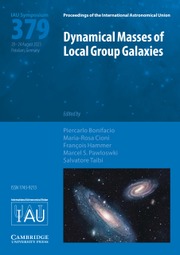No CrossRef data available.
Article contents
What do we really know about the low-ionization structures in planetary nebulae?
Published online by Cambridge University Press: 06 October 2025
Abstract
We do know that planetary nebulae (PNe) are ionized gaseous clouds of material ejected by evolved dying stars. The intense ultraviolet radiation field of these stars leads to the dissociation of the cold molecular gas and then to the ionization/excitation of the resultant atomic gas. The chemical composition, ionization structure, physical conditions and formation process of nebular shells, rims, and halos are well comprehended. On the contrary, the origin of low-ionization structures (LISs) frequently found in PNe break the overall picture, and it still remains poorly understood. The latest discoveries of molecular hydrogen (H2) in LISs have changed how we think about their origin. Besides the detection of H2 emission, the [Fe ii] 1.644μm and [C i] 8727Å lines have also been detected in LISs. These results add new pieces to the puzzling problem of LISs opening a new window to enrich our knowledge and understanding on these microstructures.
Keywords
Information
- Type
- Contributed Paper
- Information
- Proceedings of the International Astronomical Union , Volume 19 , Symposium S384: Planetary Nebulae: A Universal Toolbox in the Era of Precision Astrophysics , December 2023 , pp. 163 - 169
- Creative Commons
- This is an Open Access article, distributed under the terms of the Creative Commons Attribution licence (http://creativecommons.org/licenses/by/4.0/), which permits unrestricted re-use, distribution and reproduction, provided the original article is properly cited.
- Copyright
- © The Author(s), 2025. Published by Cambridge University Press on behalf of International Astronomical Union


